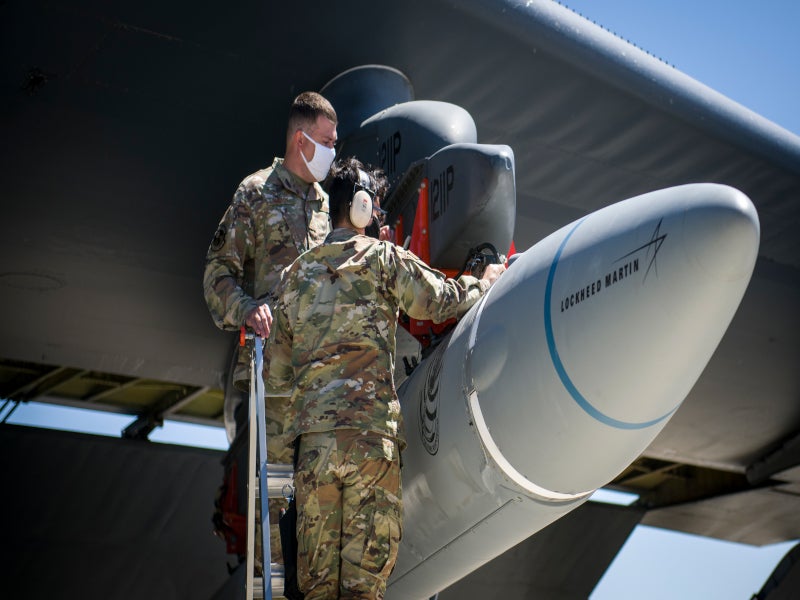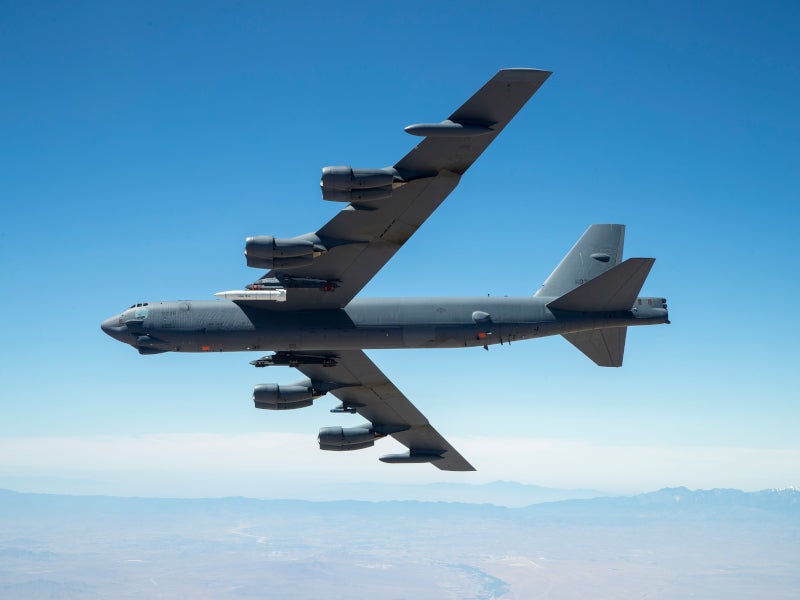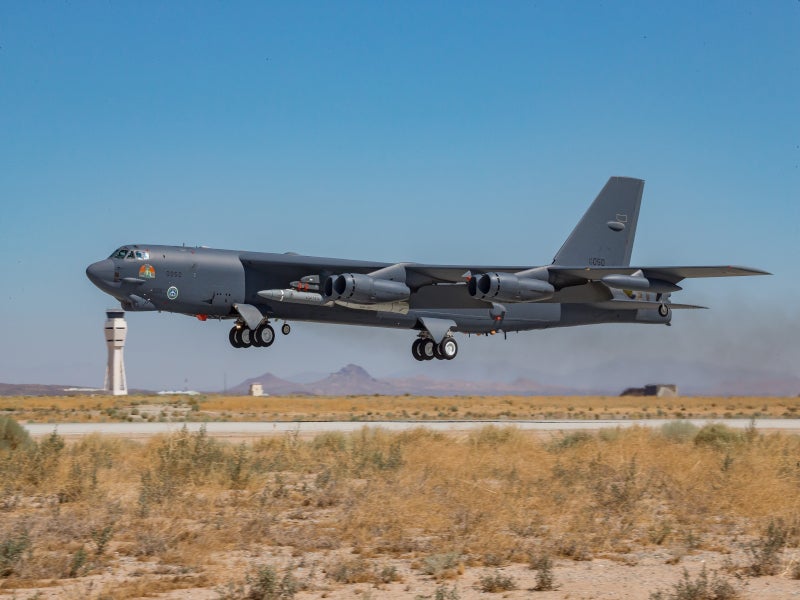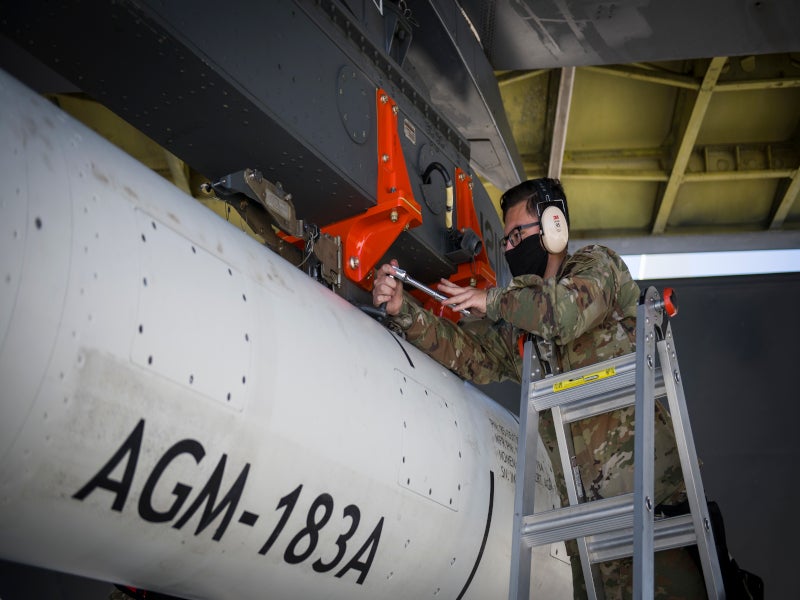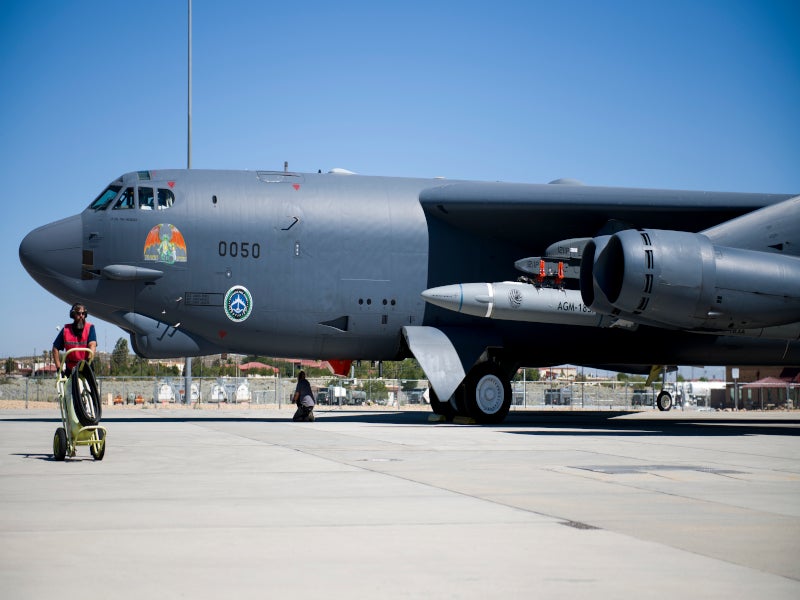The AGM-183A Air-launched Rapid Response Weapon (ARRW) is a long-range hypersonic missile designed by Lockheed Martin for the US Air Force (USAF).
The missile will improve the hypersonic strike capabilities of the USAF. It will provide rapid response by striking high-value, time-dependent targets in challenging locations, including enemy military bases and surface warships from stand-off distances.
The early operational capability (EOC) of the missile is planned to be achieved in September 2022.
AGM-183A ARRW development
AGM-183A missile is being developed under the ARRW programme, which is a rapid prototyping project of the USAF’s Hypersonics Prototyping Programme Element.
ARRW missile’s software development strategy was released in May 2018. The cybersecurity strategy of the ARRW programme received the final approval in March 2019.
The US Air Force awarded a contract worth more than $480m to Lockheed Martin for designing ARRW, a second hypersonic weapon prototype, after Hypersonic Conventional Strike Weapon (HCSW), in August 2018. The HCSW was later cancelled due to budget constraints in February 2020.
The USAF conducted the first captive-carry flight test of ARRW missile in June 2019, while the second flight test of the missile was completed in August 2020. The B-52 Stratofortress bomber aircraft carried the missile for the test from the Edwards Air Force Base in California.
Lockheed Martin received a $988.8m contract modification for the ARRW critical design review, test and production readiness support, in December 2019. The work is expected to be completed by December 2022.
The US Air Force requested $382m in funding for the ARRW programme development in the fiscal year 2021 and will require $581m for the development beyond 2022. A total of 33 ARRW missiles will be developed under the programme for concept demonstration.
AGM-183A ARRW design and features
AGM-183A ARRW missile is being developed as a small-sized, air-launched weapon system with the speed of up to Mach 20 and a range of approximately 925km (575mi). The missile will be carried under the wing of the B-52H bomber aircraft.
The Defence Advanced Research Projects Agency’s (DARPA) tactical boost-glide (TBG) technology is being utilised under the ARRW programme for the development of the missile’s high-speed component. TBG is a joint programme between DARPA and the US Air Force. The TBG demonstration system will be integrated into the ARRW payload.
Two critical technologies are being evaluated to improve the materials of the missile, which will enable it to withstand extreme temperatures at hypersonic speeds.
Boost-glide system of AGM-183A ARRW missile
The AGM-183A ARRW employs a hypersonic boost-glide system where a rocket propels its payload to high speeds. The payload is then separated from the rocket before flying as unpowered glider towards the target.
The missile’s aeroshell is dropped from high-altitudes and the hypersonic glider warhead is detached to glide and manoeuvre to the target at hypersonic speed, creating an impact equivalent to a powerful bomb.
Flight test details
The first captive-carry flight test was performed for preliminary design review (PDR), while the second flight test was performed with tactical hardware and was completely instrumented for the collection of thermal, mechanical, and digital data from the carrying vehicle.
The missile successfully transmitted telemetry and GPS data from its Instrumented Measurement Vehicle (IMV)-2 to the Point Mugu Sea Range ground stations. The test also verified the integration of the system with the B-52 platform and telemetry.
Additional booster test flights and other ground and flight tests will be performed in the coming years.

